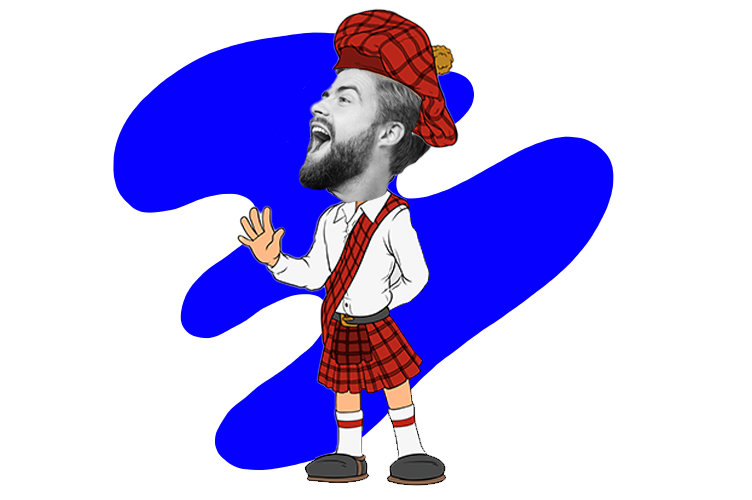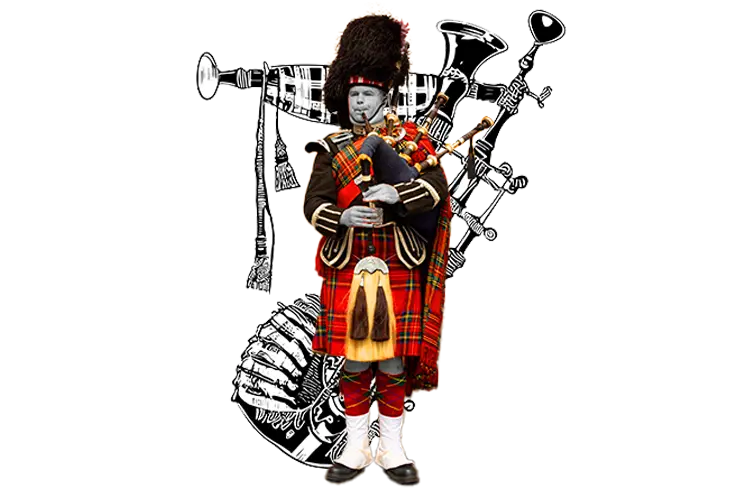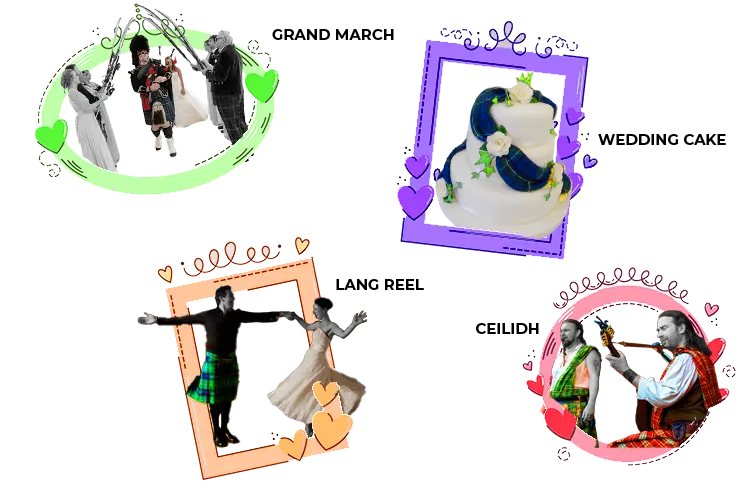
Whether you swoon over the lush countryside, can trace your family tree back to Scotland, or simply admire Scottish culture, there are plenty of reasons to learn more about Scottish wedding traditions.
Like many of the country’s traditions, its wedding rituals come from a mixture of Celtic and Christian practices. Scotland adopted some of these rituals for practical reasons, while adopting others based on superstitions. Either way, Scotland’s most beloved wedding traditions are romantic and worth incorporating into your own wedding day.
To help you get a better idea of what Scottish wedding traditions are all about, we’ve put together a complete guide. We’ve also provided a rundown of what to expect from Scottish wedding ceremonies and receptions, in case you find yourself attending a wedding in Scotland.

Usually, a Scottish bride wears a white or cream wedding dress. However, that wasn’t always the case.
Before the reign of Queen Victoria (1837-1901), Scottish brides married in pretty much any color dress they wanted. The only off-limits colors were green and black — green because it was associated with mischievous fairies who would destroy the wearer, and black because it was the color of mourning.
In terms of accessories, some modern brides wear a veil, but many don’t. Instead, they may wear a floral crown, hatinator, or fascinator. Many brides also wear a Luckenbooth as part of their ensemble, a brooch either passed down from the bride’s mother or a gift from the groom to the bride. The basic Luckenbooth design is two intertwined hearts topped with a crown, representing Mary Queen of Scots.
Scottish grooms almost always wear kilts. A tradition dating to the late-16th and early-17th centuries, grooms wear kilts to represent their clan or family. In addition to the kilt, men wear a white shirt and a waistcoat in a coordinating color. Accessories include wool socks, a tie, sporran (a pouch worn around the waist), kilt pin, and sgian dubh (a small knife tucked into the man’s sock). Shoes are most often ghillie brogues, a tongueless, lace-up style.
In the wedding party, bridesmaids usually wear matching dresses in a color and style selected by the bride. Like the groom, groomsmen wear their family’s kilt.

In addition to wearing traditional clothing, many Scottish brides and grooms incorporate lucky charms into their wedding outfits. Some of the most common examples include a and white heather or thistle in bouquets.
The sixpence in the bride’s shoe tradition traces its origins back to Victorian times, when fathers would place a sixpence coin in their daughter’s shoe for good luck. The coin represented good fortune and prosperity for the new couple. Even though the sixpence coin is no longer legal tender, plenty of Scottish brides still follow this tradition, either by purchasing an antique coin online or using an alternative.
White heather and thistles are also mainstays at Scottish weddings. Both plants bring good luck, and wedding parties incorporate them into bridal bouquets and lapel pins.

A traditional Scottish wedding ceremony features all kinds of rituals and symbols. Some of the most common include pipers, handfasting, an oathing stone, and unity candle.

Scots are a fun-loving bunch of people, and Scottish wedding parties are no exception, especially when it comes to the reception. Dinner, dancing, and drinking are all on the menu, but plenty of uniquely Scottish traditions are also baked into the wedding reception.
Here are some of the most common ones you’ll see at a traditional Scottish reception.
Traditionally, the bride’s family is responsible for the reception, church flowers, wedding stationery, and the cake. The groom pays for the wedding rings, the marriage license, the bride’s flowers, and presents for the wedding party. However, these rules aren’t strictly enforced, leaving couples to make their own financial decisions.
Following the Roman tradition, Scots wear their wedding rings on the ring finger of the left hand.
Scots are a generous bunch, especially when sharing their traditions with foreigners. Feel free to wear a kilt to a Scottish wedding. You can choose whichever pattern you like best.
Aside from haggis (a meat pudding made from sheep’s organs), there are no rules about what food to serve at a Scottish wedding. Still, you’ll likely see local dishes like blackface lamb, stovies (potatoes mixed with fat and meat), Scotch broth soup, smoked salmon, and neeps & tatties (potatoes and turnips).
The length of a Scottish wedding depends on the couple getting married. Civil ceremonies might take as little as 10 minutes, whereas more personalized ceremonies could take around half an hour. Following the ceremony, there’s usually a cocktail reception, sit-down dinner, and dancing, which could take several hours.
From bagpipes and the Quaich, to the ceilidh dance and the traditional attire, each Scottish wedding tradition tells a story about this magnificent culture. Whether you’re planning your dream Scottish wedding or just want to learn more about your culture, we hope this guide has inspired you.
Need more wedding planning help? Find even more wedding resources at TheGroomClub.